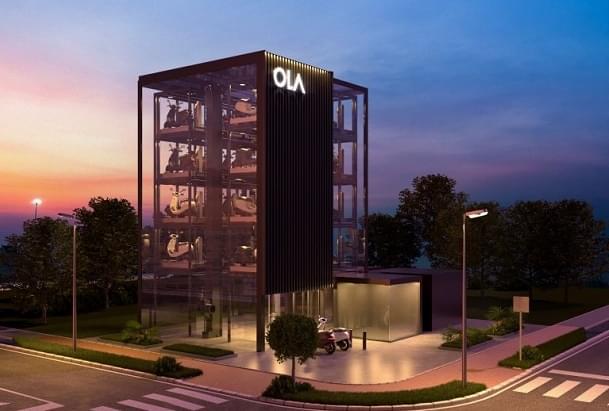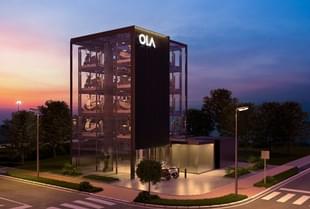Tech
Why Ola Electric’s Success Matters
Arihant Pawariya
Jul 24, 2021, 10:58 AM | Updated 10:58 AM IST
Save & read from anywhere!
Bookmark stories for easy access on any device or the Swarajya app.


The Electric Vehicle (EV) landscape has changed quite fast over the past few years. Not surprisingly, the shift has not been led by established industry players who dominate the internal combustion engine (ICE) market.
People have been awake for years to the massive positive potential of transformation in the transport industry from vehicles running on petrol and diesel to the ones running on batteries charged by electricity and they have been waiting for decades for the revolution to take place only to be disappointed by bad looking, slow moving, pricey crap which runs out of juice in no time.
The damage inflicted by old EV offerings on the psychology of people has been so negative that even today, it’s proving to be a big barrier in marketing for enterprising newcomers.
One must credit Elon Musk, who is single-handedly responsible for changing hearts and minds of millions across the globe.
In India, there is no Tesla so far. Here, Tata Nexon EV has been the most successful car. The factors that work in its favour are design (which is why its ICE version is now one of the top selling compact SUVs), five star safety rating, affordable price and range (on paper - 312 km in single charge; 200-250 km in real life depending on various factors which influence an EV’s range).
But still, the range and price both are a hindrance for it to emerge as a true alternative to ICE cars. If its going to cost Rs 13-15 lakh, people would at least want the car to go longer distances without stopping for a charge.
If it's going to run 200-250 km at the maximum, then the price needs to be at par with Nexon’s ICE version. If neither, at least there has to be a hybrid option where the vehicle can run on petrol/diesel if it runs out of charge.
Again, it may take an industry outsider to shake up the space.
Ola, a cab aggregator and ride-sharing company, is on the cusp of radically changing the two-wheeler EV market in India. From the details that have been leaked ahead of the launch of the scooter, it seems that it's going to blow the competition away on almost every criteria — pricing, range in a single charge, features via instrument cluster and digital display, design, even bootspace and colour options.
In a matter of a few months, it has set up its 500-acre FutureFactory in Tamil Nadu and the company is claiming a production capacity of one crore scooters per annum.
This is a bold move when the whole two-wheeler industry sold two crore vehicles in 2019, the pre pandemic year (the sales shrank to 1.5 crore vehicles in 2020).
The best available two-wheeler EV currently (in quality, not in sales number) has been the offering from Ather energy, a start-up based in Bengaluru.
But it sold only 3,000 units in 2020, though that was still a 30 per cent increase from the previous year. Overall, the total two-wheeler EV sales figure for 2020 was 30,000 odd vehicles.
In the first half of fiscal 2021-22, a similar number of EVs have been sold, which shows that the total annual sales might double. In this environment, Ola’s electric scooter is being launched.
Reports in the media claim that it received 1 lakh bookings in less than 24 hours, which shows that the demand is there if someone offers a quality product at an affordable price.
Currently, analysts are predicting that Ola will corner a majority of the EV market soon after launch. But they are underestimating the potential of a good two-wheeler EV.
Ola has a good chance of cornering a majority of the two-wheeler market and make decades-old established players irrelevant in no time.
If Ola’s product is as good as claimed, there is a small window for industry giants to change or face a total rout.
The success of Ola’s two-wheeler EV will be hugely beneficial for the country. As per a survey in 2014 by Nielsen, two-wheelers consumed 61.42 per cent of the country’s total petrol sales.
The share wouldn’t have changed much in the last six years. As per Niti Aayog‘s report from 2018, two-wheelers alone consume around 3,400 crore litres of petrol every year.
At Rs 100 per litre, this would amount to Rs 3.4 lakh crore. Imagine the savings to both consumers and the government (on account of oil import bill) if electric were to take off.
Three important factors are now at play which are incentivising the demand for EVs — high petrol prices, recent increase in subsidy by Centre for two-wheeler EVs by 50 per cent and states providing additional subsidy over and above the one given by the Centre (Gujarat, Maharashtra and Delhi being the most generous with subsidy per kwh at par with the Centre or even higher and waiving of registration/road tax by some other states).
These incentives may not last long if the Ola EV revolution really takes off and lakhs of people indeed start buying these two-wheelers. That would be too costly for the state’s exchequer.
But perhaps by that time, the improvement in technology would help bring down the costs even further. Everyone should root for the success of Ola electric.
It would be a huge victory for the environment, economy and national interests.
Arihant Pawariya is Senior Editor, Swarajya.





